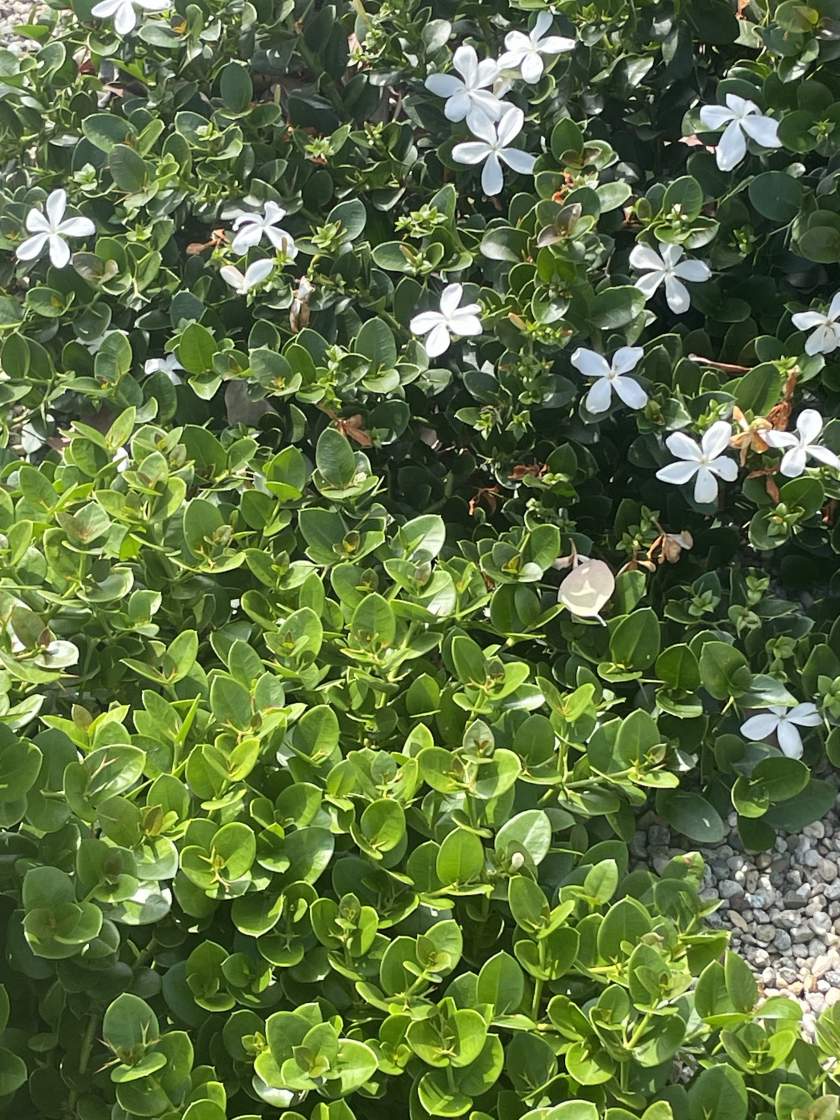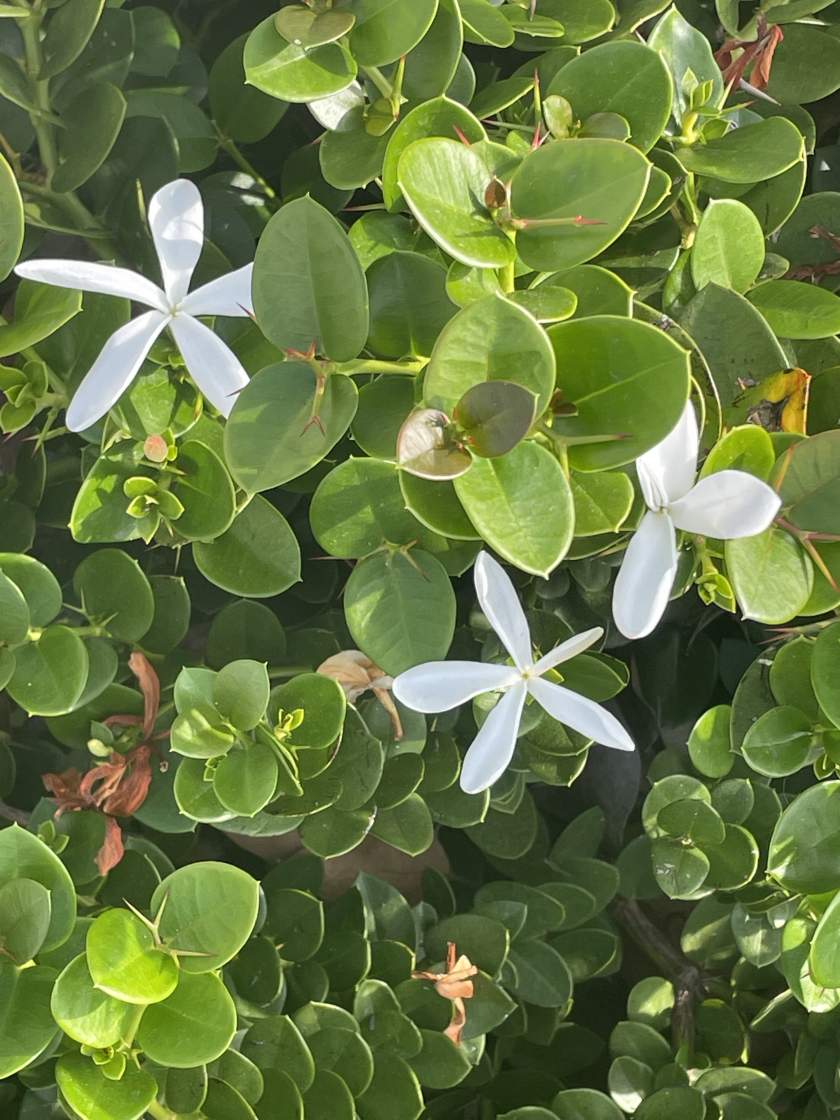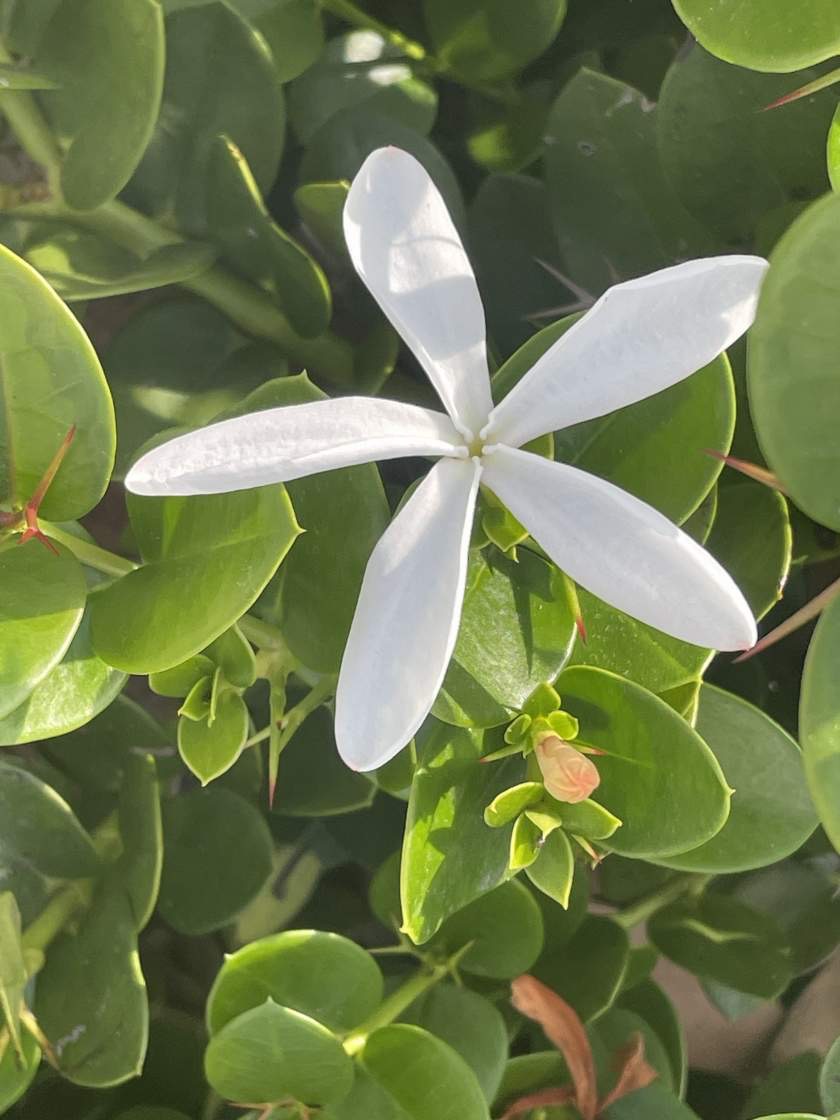Discover the Enchanting Carissa macrocarpa: A Versatile and Fragrant Shrub for Your Garden
Carissa macrocarpa or Natal Plum is a captivating and versatile shrub that brings beauty and fragrance to any garden. With its glossy, leathery leaves, fragrant white flowers, and plump, flavorful fruit, the Natal Plum is a favorite choice for both ornamental and practical purposes. Whether used as a hedge, a focal point in a garden bed, or a container plant, this shrub adds elegance and tropical charm to outdoor spaces. Let’s explore how to cultivate and care for this enchanting shrub.
Characteristics:
Carissa macrocarpa is a broadleaf evergreen shrub that typically reaches a height of 5-7 feet (1.5-2 meters), although it can occasionally grow up to 30 feet (9 meters) tall. The plant has a dense and closely branched structure with an upright, rounded form, adorned with stout, forked spines up to 4 cm long. Its leaves are simple, opposite, and ovate, measuring between 3-6.5 cm long. The foliage is leathery, glossy, and a rich shade of green, contributing to the shrub’s lush appearance.
What makes the Natal Plum truly captivating are its fragrant white flowers, five petals arranged in a star-shaped pattern. These flowers bloom throughout the year, spreading beauty and emitting a delightful scent that enhances any outdoor space. Additionally, the shrub produces oval-shaped fruit resembling plums, measuring between 2.5-4 cm in length. Initially green, the fruit ripens to a vibrant red or purple color, featuring a thin skin and a raspberry- or cranberry-like flavor.
Carissa macrocarpa, a captivating member of the Apocynaceae family, commonly known as the Natal Plum, is a versatile and fragrant shrub that brings beauty and fragrance to any garden. With its glossy, leathery leaves, fragrant white flowers, and plump, flavorful fruit, the Natal Plum is a favorite choice for both ornamental and practical purposes. Whether used as a hedge, a focal point in a garden bed, or a container plant, this shrub adds elegance and tropical charm to outdoor spaces. Let’s explore how to cultivate and care for this enchanting member of the Apocynaceae family.
Cultivation of Carissa macrocarpa:
When it comes to cultivating the Natal Plum, there are several key factors to consider for optimal growth and care.
Sunlight: The Natal Plum thrives in both full sun and light shade. It is adaptable to various light conditions, making it suitable for a range of garden environments. Place the shrub in an area where it can receive at least six hours of direct sunlight daily to ensure healthy growth and abundant flowering.
Watering: While Carissa macrocarpa is relatively drought-tolerant once established, it requires regular watering during the first year after planting. Provide deep watering sessions to keep the soil moist but never let it get waterlogged. Once the shrub is established, it can withstand periods of drought, but it’s still important to monitor soil moisture and water when necessary, especially during hot and dry weather.
Soil: Carissa macrocarpa is adaptable to a wide range of soil types, but it thrives in well-drained soil. Ensure the planting area has good drainage to prevent waterlogging, which can lead to root rot. If planting in containers, use a potting mix specifically designed for cacti and succulents to provide adequate drainage.
Pest and Disease Management: The Natal Plum is generally resistant to pests and diseases. However, it can be susceptible to scale insects and mealybugs. Regular inspection of the plant is recommended to identify and address any pest issues promptly. Insecticidal soap or neem oil can be effective treatments if infestations occur.
Pruning: Pruning Carissa macrocarpa is beneficial for maintaining its shape, removing dead or damaged branches, and promoting new growth. Spring is the ideal time to prune the shrub, just before the growing season begins. Use sharp and clean pruning tools to make clean cuts and shape the shrub according to your desired form.
Propagation:
Carissa macrocarpa can be propagated through both seed and cuttings, with the latter being the preferred method for more successful results and faster maturation. Take cuttings from healthy, non-flowering branches during the spring or summer. Remove leaves from the bottom half of the cuttings, dip them in rooting hormone, and plant them in a well-drained potting mix. Keep the soil consistently moist but not overly saturated. Rooting typically occurs within 4-6 weeks. Once the cuttings have rooted, transplant them into individual pots and provide a warm, sunny location until they are established. Finally, plant the rooted cuttings in the garden.
With its resilience, ornamental value, and delicious fruit, the Natal Plum or Carissa macrocarpa is an excellent addition to any garden. Whether used as a hedge, a specimen plant, or a container shrub, this beautiful shrub brings elegance, fragrance, and tropical charm to your outdoor space. Follow the cultivation guidelines and care tips mentioned above to ensure the Natal Plum thrives and becomes a highlight in your garden.






